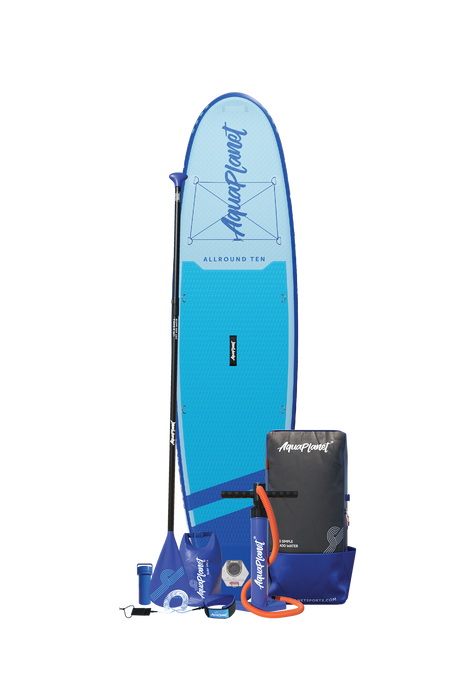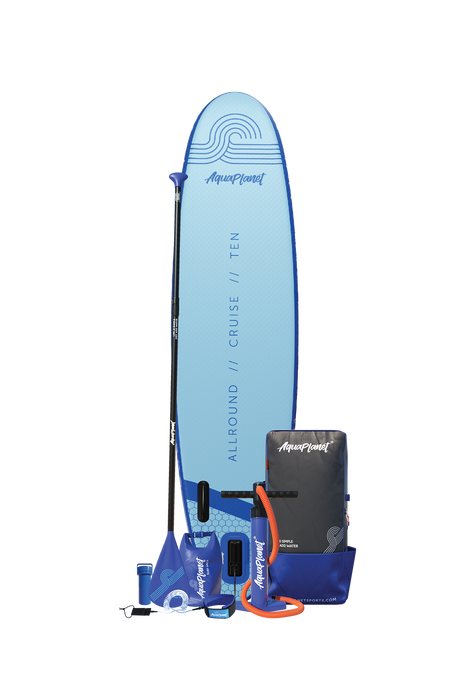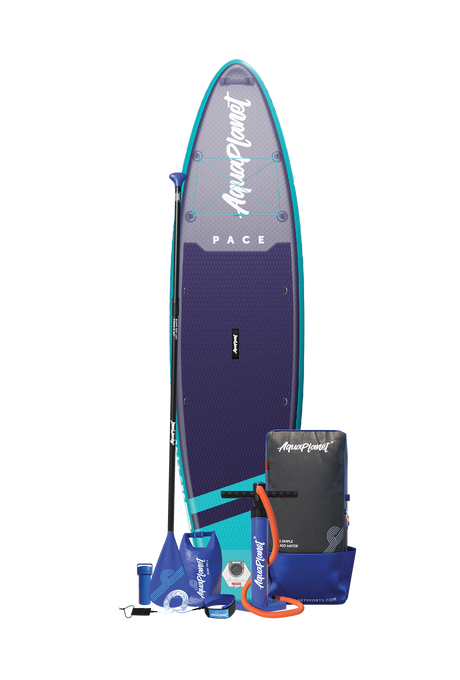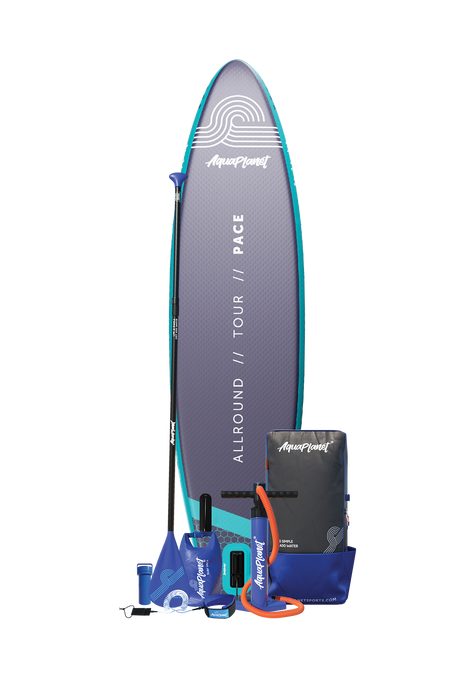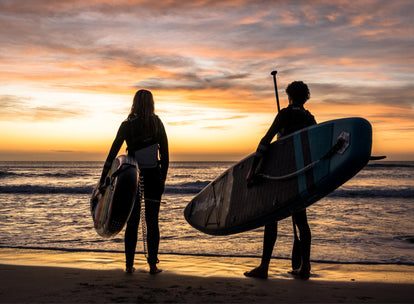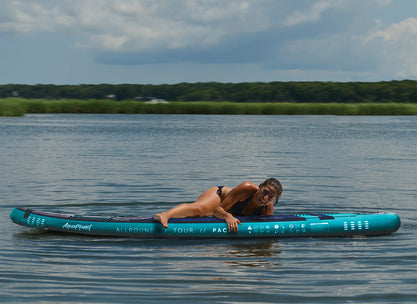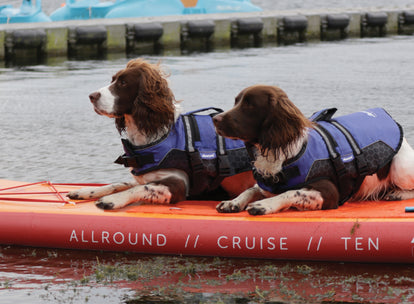So, you’ve been up and down your local stretch of river or coastline so much you could now paddle it with your eyes closed. You’re craving something new and exciting, a way to spread your paddle boarding wings and fly the beginner’s nest. Well, we have 3 words for you. Touring. Paddle. Boards.
Touring paddle boards (AKA tour SUPs) are the perfect natural progression from your first paddle boarding experience. They’re designed to travel longer distances in shorter times and have more room for kit and equipment, even your camping gear so you can start your longer haul paddle board adventures.
Best locations for touring paddle boards

No matter where you are in the world, you’re never far from great places to give your touring paddle board a spin. If you’re in the UK, then you are particularly lucky! We have miles of picturesque coastlines and glorious stretches of wild rivers to explore.
Some of our favourite places to go touring on a paddle board include: The Wye, The Severn, The Dee, The Trent, The Tees, The Spey, The Caledonian Canal, South Wales Coastline, Pembrokeshire Coast, North Wales Coast, Trans-Pennine Canal, The Dorset Jurassic Coast, The Norfolk Broads, The Lakes, The Lochs, amongst many more.
Check out Gopaddling.info - an amazing service from Paddle UK for more in depth information on locations and routes.
What to look for in a touring paddle board

If you are looking to become a regular touring boarder then it is a good idea to invest in a tour specific paddle board. These boards vary quite significantly to your all-round SUP so it is important to know what to look for.
Size and shape
If you’ve never laid eyes on a touring board before, you will easily be able to distinguish them from an all-round SUP from the length and the shape of the nose. All-rounder paddle boards tend to have a rounded nose whereas paddle boards designed specifically for touring will generally have a pointed nose. Some touring boards that are designed for more intense water conditions may even have a flatter nose, so be sure to look carefully at the overall shape of a board before purchasing.
For touring, it is a good idea to look for boards that are going to provide you with more space for your personal belongings and more fittings to help you secure these belongings to the board. Bungee storage areas both at the front and the back of the board are essential.
Longer paddle boards are better for touring as they provide you with a smoother glide across the water so require less strokes from the paddler meaning you won’t tire out as quickly as with a shorter board. Similarly, longer touring SUPs have better ‘directional stability’ - i.e are easier to paddle in a straight line. This again saves you from lots of hard correcting strokes and puts more of your paddle power towards propelling you forwards and onwards!
Stability is another key thing to bear in mind when choosing a touring paddle board, this is usually down to the width and outline shape of the board. Having a stable board could be important for touring as you may want to cope with more active waters and not just flat water conditions. A broader middle section where you stand, combined with a tapered nose and tail will give a good blend of speed, glide and stability. Maybe don’t be tempted by super narrow racing designs if you’re not a highly experienced paddle boarder - although fun and fast to paddle, a more stable wider board will allow you to relax and deal with a much wider range of conditions.
Fins

Often an overlooked component, paddle board fins actually have more impact on the performance and stability of a board than you might think. Generally speaking, larger fins with bigger bases will help you to track straighter and offer more stability, whereas smaller fins, although provide less stability, offer a bit more manoeuvrability and clearance in shallow waters.
For longer touring routes it’s often best to choose a larger one as it's more likely you will be travelling in a straight line and have less of a need to manoeuver lots in the water. Similarly, the advanced tracking will help the glide in between each stroke allowing you to conserve energy and enjoy a smoother ride.
If you don’t know what conditions you’ll be facing or you want to explore a range of different waterways then a board with fin boxes for interchangeable fins will give you flexibility. Swap out your longer touring fin for flexible, shorter ‘river’ fins and removable side fins to tune your board setup for the day’s paddle ahead.
Aquaplanet Tour Series paddle boards

Our new range of touring paddle boards have each been designed with a specialisation in mind. See our touring paddle boards range for more information.

For lots of long range ocean paddling or big river tours. Built for optimal speed, stability and big load carrying. An ideal stable tourer board with lots of glide and a flexible fin setup.

For tougher conditions on fast moving or white water sections. Designed to be wide and stable but still quick and roomy enough to tour. Drop your kit off and have fun playing on wild waters - tune this board for the conditions with five removable fins.

For the widest range of conditions, flat, fast, open sea and general paddling. A great allround touring paddle board with speed, stability and versatility.
Touring safety

We don’t want to nag you but we do want you to be safe on your touring paddle board so we’ve put together some safety tips. These are especially important if you’re just starting out on touring adventures.
1. Safety in numbers
It is always wise to take your touring paddle board out with others who are also touring. It means that should you or anyone else get into difficulty there is always someone there to help.
2. Research
Before you take your first touring paddle board out on voyage make sure you have done your research. Get guidebooks, watch touring vlogs on youtube, just familiarise yourself with the sport and things that can go pear shaped so you are always prepared.
3. Organised tours
For your first adventure, we’d recommend taking part in a guided tour. Not only can this be a fun way to meet other touring board enthusiasts, but an experienced instructor will be able to give you a run through of do’s and don'ts, meaning you’ll feel much more confident.
4. Don’t overreach yourself
As you become more and more experienced using your touring paddle board, you’ll be able to go on longer and longer adventures. For your first touring adventure, we don’t recommend attempting to cover the length of The Thames. Start with shorter distances in more populated locations and build up to the longer, wilder camping tours.
5. Be sensible
Make sure you’re following all the usual paddle boarding safety precautions that you normally would. Wear suitable clothing and a buoyancy aid, bring enough food and water, check the weather conditions before you go, double bag your kit in dry bags, take your phone and make sure someone knows when to expect you back.
When touring you need to be self-sufficient for longer, so think about the extra gear you’ll need to take on those multi-day trips.

